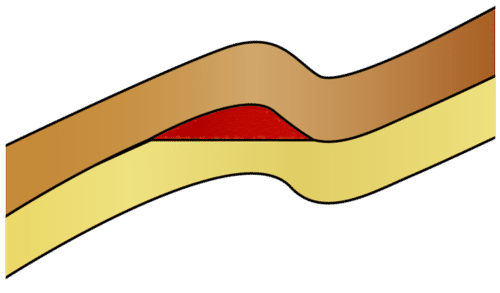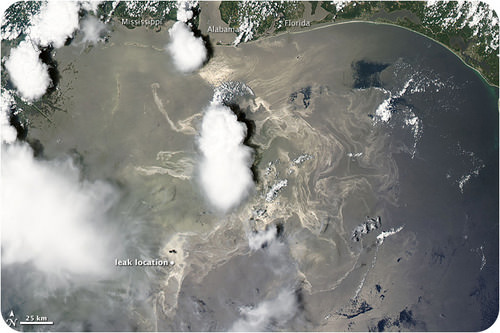
What is the connection between ancient organisms and the Indy 500?
Many forms of fun and transportation are made possible by liquid petroleum. Petroleum is the result of ancient plankton or plants dying in a sea.
Oil
Oil is a liquid fossil fuel that is extremely useful because it can be transported easily and can be used in cars and other vehicles. Oil is currently the single largest source of energy in the world.
Oil Formation
Oil from the ground is called crude oil, which is a mixture of many different hydrocarbons. Crude oil is a thick dark brown or black liquid hydrocarbon. Oil also forms from buried dead organisms, but these are tiny organisms that live on the sea surface and then sink to the seafloor when they die. The dead organisms are kept away from oxygen by layers of other dead creatures and sediments. As the layers pile up, heat and pressure increase. Over millions of years, the dead organisms turn into liquid oil.
Oil Production
In order to be collected, the oil must be located between a porous rock layer and an impermeable layer (Figure below). Trapped above the porous rock layer and beneath the impermeable layer, the oil will remain between these layers until it is extracted from the rock.

Oil (red) is found in the porous rock layer (yellow) and trapped by the impermeable layer (brown). The folded structure has allowed the oil to pool so a well can be drilled into the reservoir.
To separate the different types of hydrocarbons in crude oil for different uses, the crude oil must be refined in refineries like the one shown in Figure below. Refining is possible because each hydrocarbon in crude oil boils at a different temperature. When the oil is boiled in the refinery, separate equipment collects the different compounds.

Refineries like this one separate crude oil into many useful fuels and other chemicals.
Oil Use
Most of the compounds that come out of the refining process are fuels, such as gasoline, diesel, and heating oil. Because these fuels are rich sources of energy and can be easily transported, oil provides about 90% of the energy used for transportation around the world. The rest of the compounds from crude oil are used for waxes, plastics, fertilizers, and other products.
Gasoline is in a convenient form for use in cars and other transportation vehicles. In a car engine, the burned gasoline mostly turns into carbon dioxide and water vapor. The fuel releases most of its energy as heat, which causes the gases to expand. This creates enough force to move the pistons inside the engine and to power the car.
Consequences of Oil Use
The United States does produce oil, but the amount produced is only about one-quarter as much as the nation uses. The United States has only about 1.5% of the world’s proven oil reserves, so most of the oil used by Americans must be imported from other nations.
The main oil-producing regions in the United States are the Gulf of Mexico, Texas, Alaska, and California (Figure below).

Offshore well locations in the Gulf of Mexico. Note that some wells are located in very deep water.
As in every type of mining, mining for oil has environmental consequences. Oil rigs are unsightly (Figure below), and spills are too common (Figure below).

Drill rigs at the San Ardo Oil Field in Monterey, California.
"

A deadly explosion on an oil rig in the Gulf of Mexico in April 2010 led to a massive oil spill. When this picture was taken in July 2010, oil was still spewing into the Gulf. The long-term consequences of the spill are being studied and are as yet unknown.
Summary
Liquid fossil fuels include petroleum, which is useful for vehicles because it is easily stored and transported.
Petroleum is also extremely important for materials like waxes, plastics, fertilizers, and other products.
Extracting petroleum from the ground and transporting it can be damaging to the environment.


No comments:
Post a Comment